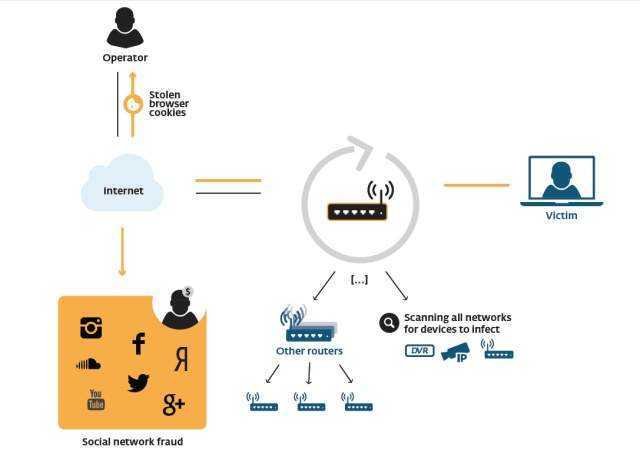New attack malware it targets social media and is distributed through home routers. Once infected, compromised devices are capable of stealing unencrypted network traffic data.
Once infected, infringing devices are ready to steal unencrypted network traffic data and offer brokerage services to the botnet operator.
In practice, they are used to steal HTTP cookies to perform cheating actions on Facebook, Twitter, Instagram, You Tube, and other web sites that include making follow, views, and likes.
- What is Moose malware?
The Linux / Moose is a family of malware that primarily targeted Linux-based consumer home router devices, but is also thought to be responsible for infecting other embedded Linux-based systems. Also among other things, the threat is said to have potential for network penetration, beyond the usual compared to other malware attacking router devices.
According to ESET researchers, this type of malware also has the ability to reroute DNS traffic, which enables man-in-the-middle attacks on the Internet.
According to the statement of Olivier Bildand, ESET researcher:
“Considering the rudimentary techniques Moose uses to obtain access σε άλλες συσκευές, είναι λυπηρό το γεγονός ότι η ασφάλεια των ενσωματωμένων συσκευών δεν φαίνεται να λαμβάνεται σοβαρά από τους κατασκευαστές δικτυακών προϊόντων. Ελπίζουμε ότι οι προσπάθειές μας θα βοηθήσουν τους καταναλωτές στο να κατανοήσουν τους τρόπους που οι maliciousagents attack their devices."






